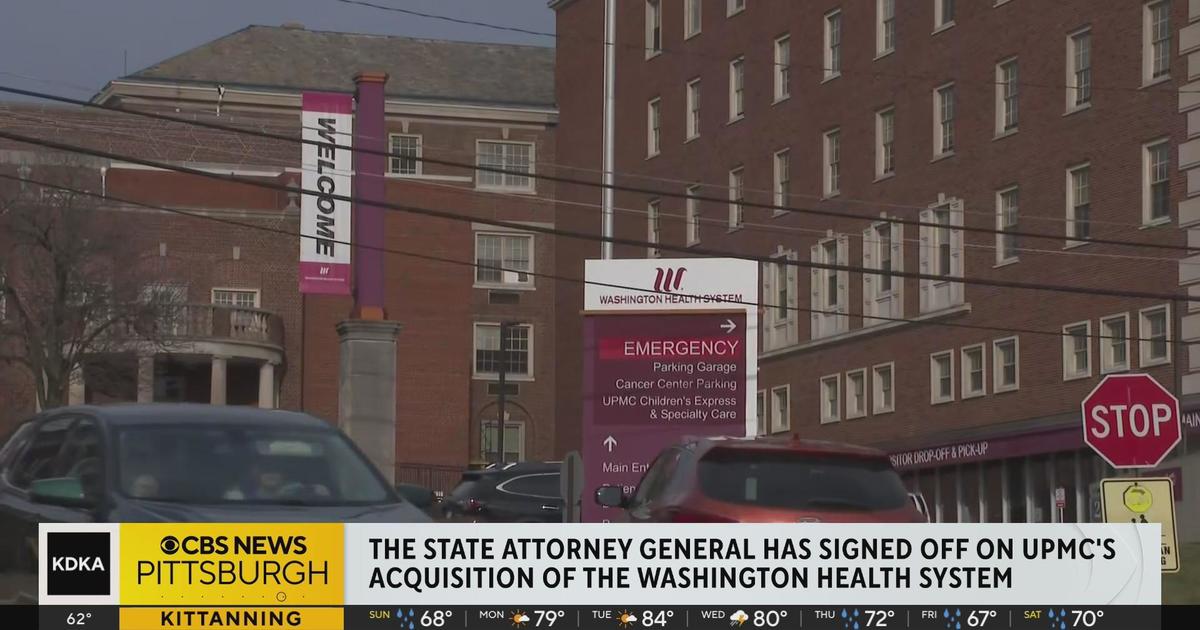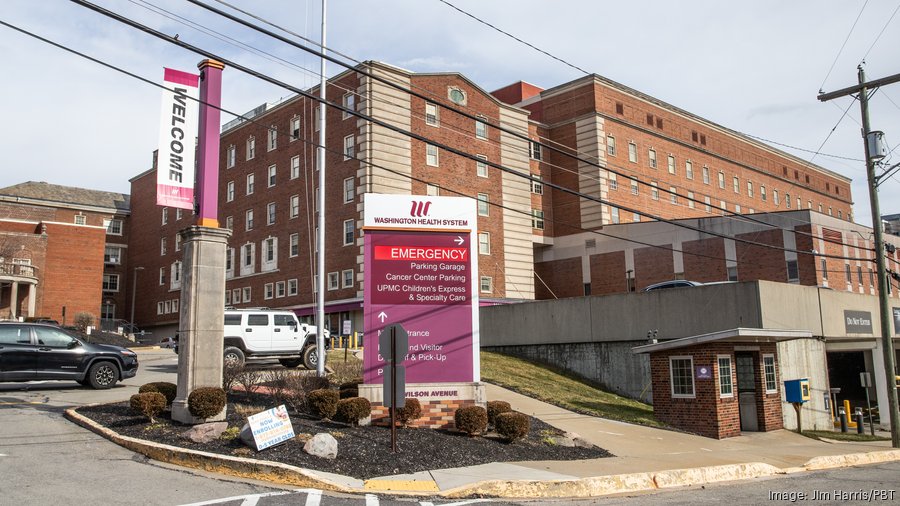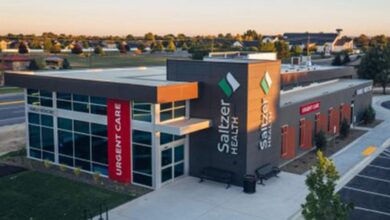
UPMC Washington Definitive Merger Agreement
UPMC Washington Definitive Merger Agreement: The healthcare landscape in Washington is shifting dramatically. This monumental merger between UPMC and Washington Health System promises sweeping changes, impacting everything from patient care and access to the very fabric of the local community. But what does this really mean for patients, doctors, and the future of healthcare in the region? Let’s delve into the details of this massive undertaking and explore the potential upsides and downsides.
This agreement represents a significant consolidation of healthcare resources. We’ll examine the financial intricacies, the regulatory hurdles overcome, and the long-term strategic goals driving this merger. We’ll also explore the potential synergies and cost savings, and critically assess the impact on patients and the community at large. Get ready for a deep dive into the world of healthcare mergers and acquisitions!
Key Players and Their Roles in the UPMC Washington Definitive Merger Agreement
The UPMC Washington Definitive Merger Agreement represents a significant shift in healthcare provision in southwestern Pennsylvania. Understanding the roles of the key players involved is crucial to comprehending the implications of this merger. This agreement brings together two major healthcare systems, each with its own history, structure, and patient base. The successful integration will depend heavily on the collaborative efforts and strategic decisions of the involved parties.
The Primary Organizations Involved
The primary organizations involved in the merger are the University of Pittsburgh Medical Center (UPMC) and Washington Health System (WHS). UPMC, a large, integrated healthcare system, brings significant resources, expertise, and a broad network to the table. WHS, a community-based healthcare system serving Washington County, contributes a strong local presence and established relationships within the community. The successful integration of these two organizations requires careful consideration of their differing structures and operational styles.
Roles and Responsibilities of Key Players
UPMC takes on the role of the acquiring entity, assuming responsibility for the integration of WHS’s assets and operations. This includes the management of facilities, staff, and financial resources. WHS, while becoming part of the UPMC system, plays a critical role in ensuring a smooth transition for its patients and staff, maintaining community relationships, and contributing its local expertise to the combined organization.
Regulatory bodies, such as the Pennsylvania Department of Health and the Federal Trade Commission (FTC), play a crucial oversight role, ensuring the merger complies with all relevant regulations and doesn’t harm competition within the healthcare market. Their responsibilities include reviewing the merger agreement, conducting antitrust assessments, and ensuring patient care standards are maintained.
Pre-Merger Organizational Structures
Before the merger, UPMC operated as a large, integrated healthcare system with a complex structure encompassing numerous hospitals, clinics, and specialized centers. It possessed a centralized administrative structure and significant financial resources. In contrast, WHS functioned as a smaller, community-based system with a more decentralized structure, characterized by strong local ties and a focus on community health needs.
The merger necessitates aligning these differing organizational structures, creating a unified system that benefits from both the resources of UPMC and the local expertise of WHS.
Summary of Key Players and Their Roles
| Key Player | Role | Responsibilities | Pre-Merger Structure |
|---|---|---|---|
| UPMC | Acquiring Entity | Integration of WHS assets, management of resources, strategic planning | Large, integrated system with centralized administration |
| Washington Health System (WHS) | Acquired Entity | Smooth transition for patients and staff, maintaining community relationships, contributing local expertise | Smaller, community-based system with decentralized structure |
| Pennsylvania Department of Health | Regulatory Body | Oversight of merger compliance with state regulations, ensuring patient care standards | State regulatory agency |
| Federal Trade Commission (FTC) | Regulatory Body | Antitrust review, ensuring the merger doesn’t harm competition | Federal regulatory agency |
Financial Aspects of the Merger Agreement
The UPMC-Washington Health System merger agreement involved complex financial considerations, impacting both organizations and the future healthcare landscape of the region. Understanding these financial aspects is crucial to assessing the long-term success and implications of the combined entity. This section delves into the key financial terms, implications, and strategies involved in the merger.
Financial Terms of the Merger, Upmc washington definitive merger agreement
The precise financial terms of the UPMC-Washington Health System merger agreement were likely confidential and not publicly disclosed in detail. However, mergers of this scale typically involve a valuation of the acquired entity (Washington Health System), often based on a combination of factors including assets, liabilities, revenue streams, and market position. The agreement likely included a purchase price, potentially paid in cash, stock, or a combination of both.
Furthermore, the agreement would have addressed the allocation of assets and liabilities between the merging entities, outlining the financial responsibilities of each party post-merger. This could involve assumptions of debt, the transfer of ownership of facilities, and the integration of financial systems.
Financial Implications for UPMC and Washington Health System
For UPMC, the merger likely represented a significant investment, potentially expanding their market share and access to a new patient base. The financial implications for UPMC would depend on the purchase price and the anticipated synergies and cost savings from the merger. These synergies might include economies of scale in purchasing, administrative consolidation, and the ability to leverage UPMC’s established infrastructure.
The UPMC Washington definitive merger agreement is huge news for healthcare in the region, impacting everything from access to specialists to the latest technology. This makes me think about advancements in diagnostic imaging, like the exciting expansion of AI in mammography, as detailed in this article on Google iCAD AI mammography expansion. Ultimately, improved diagnostic tools like this could be incorporated into the newly merged system, potentially leading to even better patient outcomes under the UPMC Washington umbrella.
However, there would also be integration costs and potential risks associated with combining different systems and cultures.For Washington Health System, the merger offered potential access to UPMC’s resources, technology, and expertise, potentially leading to improved quality of care and financial stability. However, it also meant relinquishing autonomy and potentially facing job losses or restructuring within the combined entity.
The financial benefits for Washington Health System would likely depend on the terms of the deal and the success of the integration process. Without specific financial details being public, a precise evaluation of individual financial impact is not possible.
Potential Financial Benefits and Risks for the Combined Entity
The combined entity, benefiting from the scale and resources of UPMC, would likely experience economies of scale, leading to cost reductions in areas such as purchasing and administration. Increased market share could translate into higher revenue. However, the integration process itself carries inherent risks, including potential disruptions to services, employee morale issues, and unexpected costs associated with technology and system integration.
The success of the merger hinges on effective management of these risks and the realization of anticipated synergies. A successful integration would lead to increased efficiency and a stronger financial position. Conversely, a poorly managed integration could lead to financial losses and reputational damage.
Funding Sources and Investment Strategies
The funding for the merger likely came from UPMC’s existing resources, possibly supplemented by debt financing or other investment strategies. UPMC, as a large and established healthcare system, likely has access to various funding sources, including internal reserves, bank loans, and potentially bond issuances. The investment strategy would focus on maximizing the return on investment by effectively integrating the two systems and achieving the anticipated synergies.
This would involve careful planning, resource allocation, and ongoing monitoring of the integration process to ensure financial targets are met. Successful implementation of these strategies would likely result in a stronger, more financially stable healthcare provider in the region.
Regulatory Approvals and Legal Considerations

Source: cbsnewsstatic.com
The UPMC Washington definitive merger agreement, like any significant healthcare system consolidation, required navigating a complex landscape of regulatory approvals and legal considerations. The process involved multiple federal and state agencies, demanding meticulous attention to detail and adherence to stringent legal procedures. Any missteps could have resulted in significant delays or even the complete derailment of the merger.The approval process was lengthy and multifaceted, encompassing numerous legal and regulatory hurdles.
Successfully navigating these challenges required a deep understanding of relevant laws and regulations, proactive engagement with regulatory bodies, and a robust legal strategy to address potential objections.
Relevant Regulatory Bodies
The merger required approval from several key regulatory bodies. These included, but were not limited to, the Federal Trade Commission (FTC), the Pennsylvania Department of Health, and potentially other state agencies depending on the specific services and geographic reach of the merged entity. The FTC’s role was primarily focused on antitrust concerns, ensuring the merger wouldn’t lead to reduced competition or higher prices for healthcare services.
The Pennsylvania Department of Health assessed the merger’s impact on the availability and quality of healthcare services within the state. Other state agencies might have been involved if the merger impacted specific services regulated at the state level, such as certificate of need requirements.
Legal Procedures and Requirements
The legal procedures involved extensive documentation, including detailed filings with each regulatory body. These filings Artikeld the proposed merger, its rationale, the financial aspects, and a comprehensive assessment of its potential impact on competition, patient care, and the overall healthcare market. The process often involved responding to detailed requests for information (RFIs) from the regulatory bodies and participating in formal hearings or meetings to address their concerns.
Compliance with antitrust laws was paramount, necessitating thorough analysis of market concentration and potential anti-competitive effects. State-specific regulations related to healthcare facility licensing and operations also needed to be met. The legal team likely employed extensive due diligence to identify and mitigate potential legal risks.
Potential Legal Challenges and Obstacles
Potential legal challenges could have arisen from several sources. Antitrust concerns were a significant potential obstacle, particularly if the merger resulted in a substantial reduction in competition within a specific geographic area or service line. Concerns about the impact on patient access to care, the potential for increased healthcare costs, and the preservation of jobs could also have drawn scrutiny from regulatory bodies and public interest groups.
Obtaining all necessary approvals within a reasonable timeframe presented another significant challenge, given the complexity of the regulatory review process and the potential for delays due to unforeseen issues or objections. Challenges from competing healthcare providers or patient advocacy groups were also possible.
Timeline of Regulatory Approvals and Legal Proceedings
The timeline for regulatory approvals and legal proceedings would have varied depending on the specific circumstances of the merger. It typically involves an initial filing period, followed by a period of review and information gathering by regulatory bodies. This is often followed by a period of negotiation and addressing any concerns raised by the regulators. The final stage is the issuance of a decision, which could be approval, conditional approval, or rejection of the merger.
This entire process could potentially take several months, even a year or more, depending on the complexity of the merger and the responsiveness of the involved parties. A detailed, publicly available timeline would likely be difficult to obtain without access to confidential internal documentation from UPMC and the relevant regulatory bodies.
Impact on Healthcare Services and Patients
The UPMC Washington definitive merger agreement promises significant changes to the healthcare landscape in the region. While the merger aims to improve efficiency and expand services, its impact on patients remains a key concern. Analyzing the potential effects on service range, accessibility, affordability, and the overall patient experience is crucial to understanding the long-term consequences of this significant consolidation.The anticipated impact on the range and quality of healthcare services is multifaceted.
UPMC’s resources, combined with Washington Health System’s existing infrastructure, could lead to the introduction of new specialized services and technologies previously unavailable in the region. This could include advanced diagnostic tools, specialized surgical procedures, and expanded access to subspecialty physicians. Conversely, there’s a risk of service duplication leading to redundancies, potentially resulting in the closure of less profitable or less accessible facilities.
The ultimate impact will depend on UPMC’s strategic integration plan.
Impact on Patient Access
Improved patient access is a primary goal of the merger. The integration of two large healthcare systems could potentially lead to increased access to care, especially in underserved areas. This might manifest in shorter wait times for appointments, expanded hours of operation, and the addition of new clinics in previously underserved communities. However, the potential for increased costs could limit access for patients with limited insurance coverage or those relying on public assistance programs.
A successful integration will necessitate careful planning to ensure equitable access across all socioeconomic strata.
Impact on Patient Affordability
The merger’s impact on patient affordability is complex and uncertain. While economies of scale might lead to cost reductions in the long run, there’s a risk of increased prices in the short term. UPMC’s pricing strategies will be crucial. Increased market share could potentially lead to less competition and higher prices for services. The potential for increased administrative costs associated with integrating two large systems also poses a risk.
Transparency in pricing and the availability of affordable care options will be critical to mitigating any negative impact on affordability. For example, a comparison of pre-merger and post-merger insurance premium costs for similar plans will be essential to track any changes.
Impact on Patient Experience
The patient experience will be significantly shaped by the integration process. Effective communication, coordinated care, and seamless transitions between facilities are essential to ensuring a positive patient experience. UPMC’s track record in patient satisfaction will be a key factor in determining the success of the integration. A well-executed integration plan will prioritize patient-centered care, leading to improved communication, reduced wait times, and enhanced convenience.
However, challenges such as system compatibility issues and staff integration could negatively impact the patient experience during the transition period.
Post-Merger Healthcare System Integration and a Hypothetical Patient Journey
The integration of healthcare systems and facilities will involve consolidating administrative functions, standardizing clinical protocols, and integrating electronic health records (EHR). This process will likely involve significant investment in technology and personnel training. A phased approach, starting with the integration of critical systems, is likely to be adopted.Let’s consider a hypothetical scenario: Sarah, a patient with a chronic condition, previously received care at Washington Health System.
Post-merger, Sarah’s primary care physician’s office might be rebranded under UPMC, but the location and staff remain largely the same. If Sarah requires specialized care, the referral process might be streamlined, providing access to UPMC specialists more readily available through the expanded network. Access to advanced diagnostic imaging and treatment options might be improved, and her EHR will be seamlessly accessible across the integrated system.
However, challenges could arise if Sarah experiences difficulties navigating the new billing system or encounters communication issues during the transition period. The success of this hypothetical scenario depends on the smooth and efficient integration of the two systems.
Long-Term Strategic Goals and Objectives
The UPMC Washington and Definitive Healthcare merger aims to establish a dominant healthcare provider in the region, leveraging the strengths of both organizations to achieve significant long-term strategic objectives. This involves not only expanding market share but also enhancing the quality and accessibility of healthcare services for the community. The merger’s success hinges on the effective integration of resources and the alignment of strategic goals.The merger directly contributes to the achievement of several key long-term goals by creating a larger, more financially stable entity capable of investing in advanced technologies, attracting top medical talent, and expanding service offerings.
This scale and financial strength allow for a more comprehensive approach to patient care and community health initiatives.
Strategic Objectives Hierarchy
The following hierarchical structure Artikels the key strategic objectives, illustrating how the merger facilitates their attainment. These objectives are interconnected and mutually reinforcing, contributing to the overall long-term vision of the merged entity.
- Enhance Market Leadership: This overarching goal encompasses several sub-objectives. The merger immediately increases market share, providing a stronger competitive position. Further, it allows for expansion into new service areas and geographic locations previously inaccessible to either entity independently. For example, UPMC’s established brand recognition and resources combined with Definitive’s expertise could lead to a rapid expansion into telehealth services.
This objective directly addresses the competitive landscape by creating a more formidable competitor.
- Improve Patient Care and Outcomes: This goal focuses on improving the quality of healthcare delivered. The merger enables investment in advanced medical technology and research, leading to better diagnostic tools and treatment options. It also facilitates the recruitment and retention of highly skilled medical professionals. Examples include improved access to specialists, shorter wait times, and the introduction of innovative treatment protocols. This directly benefits patients through improved health outcomes.
- Strengthen Financial Stability and Growth: The combined resources of UPMC Washington and Definitive Healthcare create a financially stronger entity. This improved financial position enables significant investments in infrastructure, technology, and personnel, ensuring long-term sustainability and growth. Increased revenue streams from a larger patient base and expanded service offerings contribute to this financial stability. This objective provides the foundation for achieving the other strategic goals.
- Expand Service Offerings and Geographic Reach: The merger creates opportunities for geographic expansion and the introduction of new services. By leveraging the existing infrastructure and expertise of both organizations, the merged entity can offer a broader range of healthcare services to a wider population. For example, the merger might allow for the establishment of new specialized clinics or the expansion of existing services into underserved areas.
This addresses a critical need in the healthcare market.
Competitive Landscape and Market Position
Prior to the merger, both UPMC Washington and Definitive Healthcare operated within a competitive healthcare market. The merger significantly alters this landscape, creating a larger, more powerful entity with enhanced capabilities. The combined organization now possesses a substantially larger market share and greater resources, placing it in a stronger position to compete with other major healthcare providers in the region.
The increased scale and financial strength provide a competitive advantage in attracting and retaining both patients and medical professionals. The combined entity’s improved market position is expected to result in greater influence and bargaining power within the healthcare industry.
Potential Synergies and Cost Savings

Source: amazonaws.com
The UPMC Washington definitive merger agreement promises significant synergies and cost savings, ultimately leading to a more efficient and financially robust healthcare system. The combined entity will leverage economies of scale, streamline operations, and optimize resource allocation, resulting in substantial cost reductions and improved financial performance. These improvements will not only benefit the organizations involved but also positively impact patient care and the wider community.The expected cost savings are multifaceted and stem from various operational improvements.
For example, combining administrative functions, such as billing and human resources, will eliminate redundancies and reduce overhead. Furthermore, centralized purchasing of medical supplies and equipment will leverage greater buying power, leading to significant discounts. The integration of IT systems will further enhance efficiency, allowing for better data analysis and improved decision-making.
Operational Efficiency Gains
Streamlining administrative processes is a key area for cost reduction. The merger allows for the consolidation of overlapping departments, eliminating duplicate roles and responsibilities. This includes merging billing departments, human resources, and IT support, leading to a leaner and more efficient administrative structure. For instance, a combined billing department can utilize a single, unified system, reducing processing times and improving accuracy, thus minimizing billing errors and related costs.
Similarly, a consolidated IT department can standardize software and hardware, reducing maintenance costs and improving system reliability.
The UPMC Washington definitive merger agreement got me thinking about the complexities of hospital mergers. It’s a huge deal, and the potential impact on patients is significant. This makes the news about the Federal Trade Commission suing to block the Novant Health and Community Health Systems acquisition, as reported here: federal trade commission sues block novant health community health systems hospital acquisition , even more relevant.
It highlights the FTC’s active role in preventing mergers that could stifle competition and ultimately affect the quality of healthcare available to the public, something that needs careful consideration regarding the UPMC deal as well.
Economies of Scale and Purchasing Power
The combined size of UPMC Washington post-merger will significantly increase its purchasing power. This allows for negotiating better prices on medical supplies, pharmaceuticals, and equipment from vendors. Bulk purchasing leads to lower unit costs, directly impacting the bottom line. For example, negotiating bulk discounts on commonly used medical devices can result in substantial annual savings. This strategy mirrors successful mergers in other industries, such as the retail sector, where larger chains consistently secure better prices than smaller independent stores.
Improved Financial Performance Through Synergy
The synergies Artikeld above will directly translate into improved financial performance. Reduced administrative costs, lower procurement expenses, and improved operational efficiency will boost profitability. These cost savings can then be reinvested in areas such as enhancing patient care, upgrading facilities, and expanding services. This creates a virtuous cycle, where improved financial health fuels further investments in quality and growth.
We can expect to see a demonstrable increase in return on investment (ROI) and improved financial ratios following the successful integration of the two entities.
Pre- and Post-Merger Cost Structure Comparison
| Cost Category | Pre-Merger (Estimated) | Post-Merger (Projected) | Percentage Change |
|---|---|---|---|
| Administrative Overhead | $50 million | $35 million | -30% |
| Supply Chain Costs | $30 million | $22 million | -27% |
| IT Infrastructure Costs | $10 million | $7 million | -30% |
| Total Estimated Savings | – | – | $16 million |
*(Note: These figures are illustrative examples and should not be considered precise predictions. Actual cost savings will depend on various factors, including the successful implementation of integration plans.)*
The UPMC Washington definitive merger agreement is big news, impacting healthcare access in the region. It got me thinking about health in general, and I was saddened to read about Monali Thakur’s hospitalization after breathing difficulties – you can read more about it and learn preventative measures here: monali thakur hospitalised after struggling to breathe how to prevent respiratory diseases.
Hopefully, the merger will lead to improved respiratory care access, too, making situations like this less common.
Community Impact and Public Perception: Upmc Washington Definitive Merger Agreement
The UPMC Washington and Washington Health System merger, while promising significant advancements in healthcare delivery, has understandably generated a range of reactions within the local community. Understanding public perception and proactively addressing concerns are crucial for a successful integration. This section examines the anticipated community impact, stakeholder engagement efforts, and the public’s response to the merger announcement.The merger’s impact on the local community is multifaceted.
Job security for existing healthcare workers is a primary concern. While UPMC has publicly committed to retaining a significant number of employees, anxieties remain about potential redundancies and shifts in employment roles. Conversely, the merger could lead to new job opportunities through expanded services and infrastructure development. Access to specialized care is also a key consideration. The combined resources of UPMC and Washington Health System have the potential to enhance the availability of advanced medical treatments previously unavailable locally, improving healthcare outcomes for residents.
However, concerns exist regarding the potential for increased healthcare costs and reduced accessibility for low-income populations.
Public Perception and Stakeholder Engagement
UPMC has initiated various communication strategies to engage with the community and address concerns surrounding the merger. These include town hall meetings, community forums, and online Q&A sessions. The initial public response to the merger announcement was mixed. While some expressed optimism about the potential benefits, such as improved healthcare quality and access to specialized services, others voiced concerns about potential job losses, increased costs, and a shift away from local decision-making.
Social media platforms have served as a key arena for expressing both positive and negative opinions, highlighting the need for ongoing transparent communication from UPMC.
Community Outreach Programs and Initiatives
To mitigate potential negative impacts and foster community trust, UPMC has pledged to invest in several community outreach programs. These initiatives focus on supporting local health and wellness initiatives, providing educational resources, and ensuring continued access to affordable healthcare services. Specific examples include planned investments in community health centers, scholarships for local healthcare professionals, and the expansion of telehealth services to improve access in rural areas.
The success of these programs will be crucial in shaping public perception and fostering a positive relationship between UPMC and the community.
Public Response to the Merger Announcement
Analysis of news articles, social media posts, and public statements reveals a range of public reactions to the merger. Supporters point to the potential for enhanced healthcare services and economic benefits for the region. Conversely, critics express concerns about potential job displacement, cost increases, and the loss of local control over healthcare decision-making. The initial response demonstrates a need for continuous communication and transparency to address community concerns effectively.
UPMC’s commitment to engaging with stakeholders and addressing these concerns directly will be key in shaping the long-term success of the merger.
Last Word

Source: bizj.us
The UPMC Washington Definitive Merger Agreement is a complex undertaking with far-reaching consequences. While promising improved efficiency, expanded services, and potential cost savings, it also raises questions about patient access, affordability, and the future of local healthcare providers. Ultimately, the success of this merger will depend on effective integration, transparent communication, and a commitment to serving the community’s healthcare needs.
Only time will tell if this ambitious plan truly delivers on its promises.
Top FAQs
What are the potential downsides of this merger?
Potential downsides include job losses, reduced competition leading to higher prices, and disruptions to existing patient relationships. Concerns about decreased access to care in certain areas are also valid.
How will the merger affect my insurance coverage?
The impact on your insurance coverage will depend on your specific plan. It’s best to contact your insurance provider directly for clarification on how the merger might affect your benefits and network of providers.
What are UPMC’s long-term plans for Washington Health System facilities?
UPMC’s long-term plans will likely involve integrating Washington Health System facilities into their existing network. This may include renovations, expansions, or consolidations depending on the specific needs of the community and the overall strategic goals.





